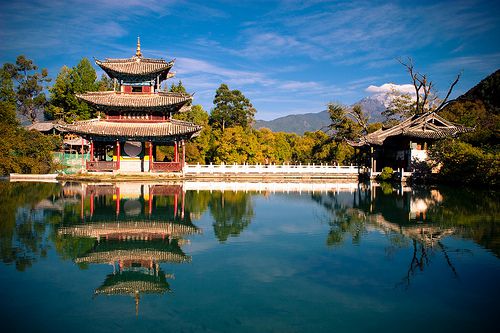The city began to be built in the end of the reign of song dynasty and early yuan dynasty (1271-1368 and 960-1279) when Kugli Khan (1271-1294). Lijiang was an important political, cultural and educational center that played an important role in the trade between Yunnan, Tibet, India and rest of Asia.
The only one of the oldest cities built without walls, Lijiang became the confluence of many cultures and its architecture creates a unique blend of styles. Narrow, sometimes crooked streets, houses built of wood, with tiled roofs, with carved figures on the doors and Windows and colourful gardens in front of the entrance are typical of most of the city.
Water is the soul of the old Lijiang. The main source is the Black dragon pool. The flow diverges into separate hoses, so that every family, every street have access to it. The aqueducts nourish a lot of willow trees, shading nearly 350 ornate bridges, some of which were built during the Ming dynasty (1368-1644). Lake Erhai is one of the seven largest freshwater lakes in China. The name means "the sea in the shape of an ear".
Three pagodas, about 1 km Northwest of the ancient Dali at the foot cangshan mountain is an interesting history of more than 1800 years. Their triangular arrangement is unique to China.
